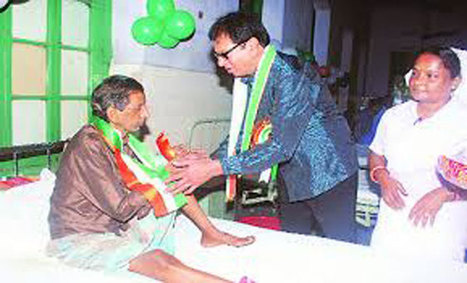Here is where we have a huge problem. Ayushman Bharat does very little for primary healthcare.
It has been announced that 1.5 lakh health and wellness centers will be set up, partly to deal with primary healthcare issues including NCDs – but, given the budgetary allocation of less than Rs 1 lakh percenter, this looks more like a very minor upgrading of the existing sub-centers and/or primary healthcare centers (PHCs).
Similar and sometimes more ambitious upgrading, including the provision of some free medicines, has been attempted by a number of states in the past; but, for the most part, there has been no reversal of the trend towards a wholesale exit from public healthcare, especially in North India.
There is now a substantial body of work that documents that, in many states, more than three-quarters of visits to primary care centers are to private providers – even though most of these providers have no medical qualification whatsoever.
This is in part because the sub-centers are open intermittently and unpredictably, and doctors and nurses are often missing from the PHCs.
It seems unlikely that small investments in these sub-centers and PHCs will change all that; the patients will probably continue to stay away, and therefore using these as the basis of outreach for NCDs and other public health interventions probably have limited potential.
The obvious alternative is to make use of informal providers who do have access to the patient population. It should certainly be recognized that they have the potential to be a public health hazard, especially because they abuse antibiotics and steroids – which contributes to rising resistance.
However, the policy response to this phenomenon has been mostly to declare these informal providers illegal and then to ignore their existence. This essentially deprives us of the primary tool for dealing with the very serious health problems that we are facing.
We need to think of ways to integrate them better into the overall healthcare project and give them better incentives, which would be easier if they had something to lose. Based on this we suggest the following steps.
Recognize and train informal healthcare providers.
A randomized control trial that was carried out in West Bengal (published in Science, 2016) shows that training private sector informal healthcare providers to improve their performance (measured by sending them ‘fake’ patients) by a very significant amount. Based on that, West Bengal has already begun training many thousands of informal health providers.
Develop a set of cell-phone-based checklists
For treatment protocols for these practitioners to use, to react to the common symptoms they face. This is similar to what Atul Gawande has proposed for the United States (but much more basic).
Develop a simple test that allows the government to certify these practitioners as health extension workers.
Passing this test will allow them to deliver various public health interventions and perhaps be paid for participating in them. Moreover, evidence suggests that the patients are aware of the value of such certification and trust those certified more.
Recognize those who are certified
As the front line of defense against NCDs and malnutrition. Think of ways to reward those whose referral leads to the detection of a serious ailment.
Enforce existing laws
That makes it impossible for these practitioners to dispense high-potency antibiotics and steroids. This includes shutting down stores that violate the existing laws about who can prescribe what. At the same time, make it legal for informal providers to prescribe a range of less critical medicines, much like the nurses.
Expand the number of MBBS doctors and trained nurses
Coming out of the system and consider introducing some other intermediate degrees for practicing a limited range of healthcare. This is the model we had before Independence and the one that many other countries have adopted.
In addition, it is not clear that the government should rely entirely on the private sector to deliver tertiary care within PMJAY. There are already complaints from the healthcare sector about the prices the Indian government is proposing, which might result in many hospitals opting out and others selectively refusing to deliver certain treatments (even if that is against the rules).
PMJAY will probably relieve some of this pressure on these public hospitals. However, it still makes sense for the government to try to simultaneously improve the delivery of secondary and tertiary care in the public sector.
Given that public hospitals will be able to bill their patients to PMJAY, which gives the public hospitals stronger reasons to compete with the private sector, it is a natural moment to expand this part of the government system. Therefore, we recommend, for secondary and tertiary care:
• Build a second district hospital in every district headquarters outside the state capital. Once it is built and is operational, refurbish and modernize the existing district hospital and bring it to acceptable standards.
Finally, it is very difficult to improve healthcare substantially unless we get the customers to demand better care (to fear antibiotics, seek out tests, and so on). This has to be a priority for any government. This is our final recommendation:
• Carry out public health campaigns to raise the awareness of NCDs, immunization and the dangers of overmedication. Recent evidence suggests that entertainment-education may be a very powerful device in this regard.
Read More: https://www.telegraphindia.com/culture/books/nobel-laureate-abhijit-banerjee-on-what-ails-india-s-healthcare-sector/cid/1711667



 Your new post is loading...
Your new post is loading...












